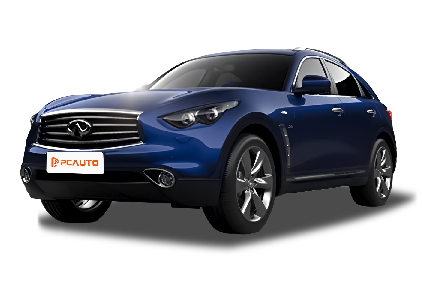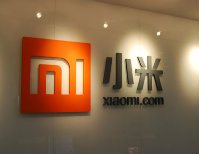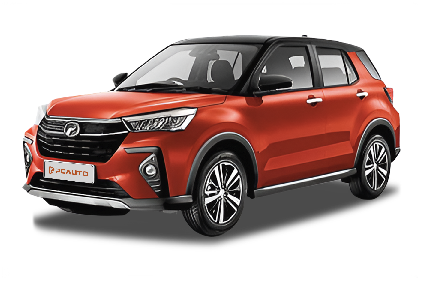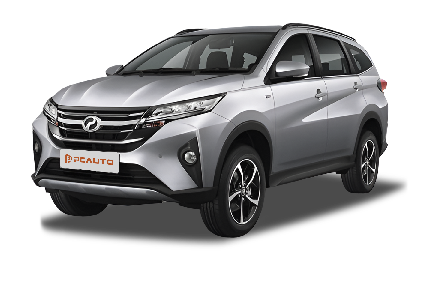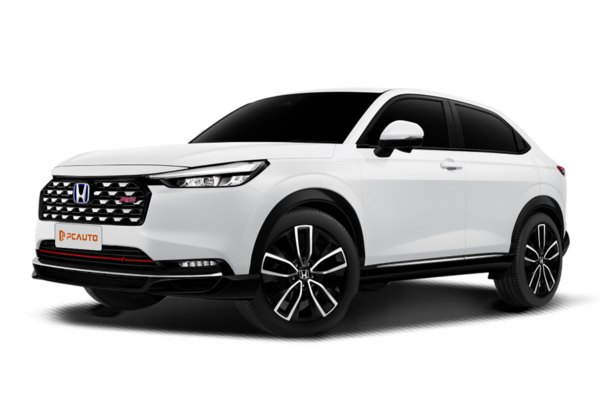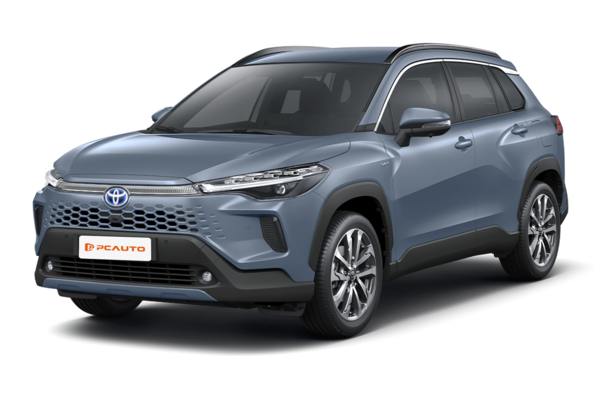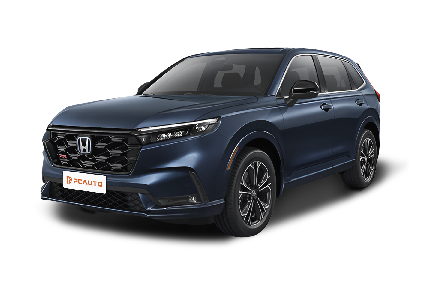Q
Is the 2017 INFINITI Q60 a good car?
The 2017 INFINITI Q60 is a luxury coupe with elegant design and excellent performance, which is especially suitable for Malaysian consumers who value driving pleasure and stylish appearance. It is equipped with a 3.0-liter V6 twin-turbocharged engine, offering abundant power (300 or 400 horsepower versions). Paired with a 7-speed automatic transmission, it has smooth acceleration and a sensitive response, making it suitable for both urban and highway conditions in Malaysia.
The interior uses high - end materials such as leather and aluminum alloy trim panels. It comes standard with a BOSE audio system and dual touchscreens, exuding a strong sense of technology. However, the rear - seat space is a bit cramped and is more suitable for two passengers.
In the Malaysian market, its reliability is just average. The maintenance cost is slightly higher than that of mainstream Japanese brands. But INFINITI has official service centers in big cities like Kuala Lumpur, and the parts supply is relatively convenient.
It should be noted that its fuel consumption (about 10 - 12L/100km) is at a medium level among similar models, and its second - hand resale value is not as good as that of German competitors. However, considering the price advantage of the new car back then (starting from about 300,000 Malaysian ringgit), its cost - performance ratio is still worth considering.
Among its peers, its handling is better than that of the Lexus RC but slightly inferior to that of the BMW 4 Series. It is suitable for buyers who pursue individuality and have sufficient budgets.
Q
How much horsepower does a 2017 INFINITI Q60 have?
The horsepower output of the 2017 INFINITI Q60 depends on the selected engine variant. The 3.0-liter V6 twin-turbocharged version offers two tuning options: the lower-power variant delivers 300 horsepower, while the higher-power variant reaches 400 horsepower. The version equipped with a 2.0-liter four-cylinder turbocharged engine produces 208 horsepower. This luxury coupe has won over Malaysian consumers with its sleek lines and sporty design, particularly appealing to owners seeking both performance and comfort. In the Malaysian market, the Q60's 3.0T variant is more popular. Its ample power paired with a 7-speed automatic transmission delivers agile acceleration, while INFINITI's intelligent all-wheel drive system ensures stability on slippery surfaces. It's worth noting that horsepower is just one metric for evaluating vehicle performance. Torque output, curb weight, and transmission efficiency are equally crucial. We recommend test-driving the vehicle before purchase to experience its overall capabilities. Additionally, in Malaysia's hot climate, pay special attention to cooling maintenance for turbocharged engines. Regular coolant and oil changes are essential to maintain peak performance.
Q
How much is Infiniti Q60 2017?
The price of the 2017 Infiniti Q60 in the used car market in Malaysia is approximately between RM 150,000 and RM 250,000. The specific price depends on factors such as the vehicle's condition, mileage, configuration version (e.g., 2.0T Luxe, 3.0T Sport, etc.), and whether it has official certified warranty. It is recommended to check the latest quotes through local used car platforms or Infiniti - authorized dealers.
This two - door coupe is well - known for its sporty appearance and 3.0 - liter V6 twin - turbocharged engine (producing 400 horsepower). It also offers rear - wheel drive or all - wheel drive options, making it suitable for consumers who seek both performance and luxury.
It's worth noting that as a high - end brand under Nissan, Infiniti has a relatively low market share in Malaysia, which may result in longer waiting times for repair parts. However, the original service network can still provide professional support. If you're considering similar models, you can also refer to Japanese or German competitors such as the Lexus RC or BMW 4 Series. Nevertheless, the Q60's unique design language and cost - effectiveness remain its advantages.
When making a purchase, be sure to check the vehicle's history to ensure there are no major accidents or mileage tampering.
Q
What is the recall on the 2017 INFINITI Q60?
The recall of the 2017 INFINITI Q60 mainly concerns two issues. Firstly, the rear - view camera of the vehicle may fail to display images due to software problems, which can affect reversing safety. Secondly, there are flaws in the steering control module program of some vehicles, which may cause the power steering to suddenly weaken. Both of these issues can increase driving risks. Therefore, the manufacturer is recalling the vehicles to offer free software upgrades or part replacements to ensure safety.
For Malaysian owners, if your vehicle is part of the affected batch, it is recommended that you contact the local INFINITI authorized service center as soon as possible to arrange for maintenance. Usually, this kind of recall repair takes a short time and is completely free.
It's worth noting that vehicle recalls are a sign of the manufacturer's responsibility, aiming to eliminate potential hazards in advance, not indicating a quality problem. The hot and rainy climate in Malaysia may accelerate the aging of electronic components. So, during regular maintenance, you can ask the technician to focus on checking the relevant systems.
In addition, owners can check the recall status by entering the Vehicle Identification Number (VIN) on the official website of the Malaysian Ministry of Transport or the official INFINITI Malaysia website to ensure that their cars always meet safety standards.
Q
What kind of engine is in the 2017 Infiniti Q60?
In 2017, the Infiniti Q60 offered two engine options, including a 3.0 - liter V6 twin - turbocharged gasoline engine available in both low - power and high - power versions. The low - power version can produce 300 horsepower and 400 Nm of torque, while the high - power version reaches 400 horsepower and 475 Nm of torque. Both are paired with a 7 - speed automatic transmission and come with either rear - wheel drive or all - wheel drive configurations.
This engine features advanced technology, with direct fuel injection and twin - turbocharging design. It delivers smooth power output and excellent fuel efficiency, meeting the Malaysian consumers' dual needs for performance and practicality. It's worth mentioning that the twin - turbocharging technology can effectively reduce turbo lag and enhance acceleration response, which is especially useful in Malaysia's mountainous areas or when frequent overtaking is required on the roads. Meanwhile, Infiniti's reliability makes it well - suited to the local hot and humid climate.
If you're after even higher performance, you can opt for the Red Sport 400 version, which is tuned for a more sporty driving experience.
Q
What transmission does a 2017 Q60 have?
In the Malaysian market, the 2017 Infiniti Q60 mainly offers two transmission options. The rear - wheel - drive version comes standard with a 7 - speed automatic manual transmission (7AT). The high - performance Red Sport 400 version, which is equipped with a 3.0 - liter V6 twin - turbocharged engine, is paired with a more advanced 7 - speed automatic manual transmission. This transmission has been specially tuned to handle the powerful 400 - horsepower engine. It's worth noting that the entire Q60 lineup does not offer a manual transmission option, which sets it apart from some models in the same class that emphasize driving pleasure.
The 7AT transmission features smooth gear changes and high reliability. It's well - suited to the frequent stop - and - go traffic conditions in Malaysian cities. At the same time, it can keep the engine running at a lower speed during high - speed cruising to improve fuel economy. For Malaysian consumers considering buying a used Q60, it's recommended to pay special attention to the transmission fluid replacement cycle. Usually, maintenance is required every 60,000 to 80,000 kilometers. If the vehicle is equipped with paddle shifters, the manual mode can be used to enhance the handling performance when driving on mountain roads.
Similar - positioned models from the same era, such as the BMW 4 Series, mostly use 8 - speed transmissions, while the Lexus RC is paired with a 6 - speed transmission. The different number of gears reflects each brand's understanding of the balance between power response and fuel efficiency.
Q
How many miles will a 2017 INFINITI Q60 last?
The durability of the 2017 INFINITI Q60 depends on various factors, including daily maintenance, driving habits, and road conditions. Generally speaking, if the vehicle is regularly maintained and used properly, it can reach a mileage of 200,000 to 300,000 kilometers or even more. As a high - end brand under Nissan, INFINITI models are usually known for their reliable engines and transmissions. The Q60 is equipped with a 3.0 - liter V6 twin - turbocharged engine and a 7 - speed automatic transmission, which perform well in terms of technical maturity and can offer a long service life.
In Malaysia, due to the hot and rainy climate, it is recommended that car owners pay special attention to the maintenance of the cooling system and electrical components. At the same time, they should regularly change the engine oil and filters to avoid additional wear and tear on the vehicle caused by the high - temperature and high - humidity environment. In addition, choosing original or high - quality replacement parts can also significantly extend the vehicle's lifespan.
For consumers who want to buy a used Q60, it is advisable to check the vehicle's maintenance records and actual condition to ensure there are no major accidents or excessive wear. All in all, the 2017 INFINITI Q60 can be a durable and stable - performing luxury coupe under good maintenance.
Q
Does the 2017 Q60 have paddle shifters?
The 2017 Infiniti Q60 is indeed equipped with paddle shifters. This feature allows drivers to switch gears more quickly and directly in manual mode, enhancing driving pleasure and control. It's particularly suitable for the hilly roads in Malaysia or situations where frequent overtaking is required. The 7 - speed automatic transmission in this model, when paired with the paddle shifters, can respond more flexibly to the driver's operations while maintaining a smooth shifting experience.
Paddle shifters are quite common in performance cars or sport - tuned coupes. For example, models like the Q60 that emphasize the driving experience usually come with them as standard. Some economy cars may only offer them in high - end versions or as part of an optional package.
For Malaysian consumers considering a used Q60, it's recommended to take a test drive to confirm that the paddle shifters are working properly. This is because these electronic components may experience a decrease in sensitivity after long - term use. Additionally, while paddle shifters can enhance control, in daily congested sections such as in the Kuala Lumpur city center, the automatic mode is still a more practical choice.
Q
How reliable is the 2017 INFINITI Q60?
The 2017 INFINITI Q60 performs above average in terms of reliability. It is equipped with a 3.0T V6 turbocharged engine and a 7 - speed automatic transmission, both of which feature mature technologies. The power output is smooth and the failure rate is relatively low, meeting the daily driving needs in Malaysia's tropical climate. However, some owners have reported that the infotainment system occasionally lags. It is recommended to update the software regularly to optimize the experience.
The interior of this car uses high - quality materials, and the seats are quite comfortable, providing good support even during long - distance drives. Nevertheless, the rear space is relatively compact and more suitable for two passengers.
In the Malaysian market, INFINITI's after - sales network is not as extensive as that of mainstream Japanese brands. But there are authorized service centers in major cities such as Kuala Lumpur and Penang. The maintenance cost is between that of luxury cars and ordinary brands.
It's worth noting that the second - hand resale value of the Q60 is slightly lower than that of its German competitors. However, its high - level configuration and unique Japanese luxury style still make it a cost - effective option. For Malaysian consumers considering buying a second - hand Q60, it is recommended to focus on checking the maintenance records of the turbocharging system and the operating status of electronic devices, as these are usually the aspects that need attention for a car of this age.
Q
Is the 2017 Q60 AWD?
The 2017 Infiniti Q60 did offer an AWD (All-Wheel Drive) version as one of its powertrain options. This model is mainly equipped with a 3.0-liter V6 twin-turbocharged engine, paired with a 7-speed automatic transmission. The AWD system can automatically distribute torque between the front and rear wheels according to road conditions, enhancing driving stability on slippery or rough roads. It's especially suitable for the rainy climate in Malaysia and areas with poor road conditions. Apart from the AWD version, the Q60 also has a rear-wheel drive (RWD) option, which is ideal for drivers who prefer the fun of handling.
The Q60 is well - known for its sporty exterior, luxurious interior, and advanced technological features (such as steer - by - wire technology). It's a great choice among coupes in the same class, combining both performance and practicality.
In the Malaysian market, it's advisable to confirm the specific configuration of the model when making a purchase, as the configurations of imported cars in different years may vary due to the import strategies of agents. Also, note that the AWD system may slightly increase fuel consumption, but it can significantly improve driving safety.
